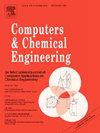Anomaly detection for drug product manufacturing considering data limitations and shifts: A case study on industrial freeze-dryers
IF 3.9
2区 工程技术
Q2 COMPUTER SCIENCE, INTERDISCIPLINARY APPLICATIONS
引用次数: 0
Abstract
Ensuring the quality of biopharmaceutical products requires robust manufacturing processes and reliable monitoring systems. In industrial applications with real data, traditional data-driven anomaly detection methods often face challenges due to data scarcity and data shifts. To address these challenges, we propose the application of Statistic Alignment (SA) as a domain adaptation technique within the broader framework of transfer learning. A methodology is presented incorporating SA as an effective precursor for One-Class Support Vector Machine (OCSVM) based anomaly detection. Using industrial data from two parallel freeze-dryers, we investigate two cases: (1) transferring a model within the same machine to handle data shifts caused by maintenance, and (2) transferring a model between machines to assess cross-system transferability. We evaluate three SA methods—Mean Alignment, Standard Alignment, and Correlation Alignment—while also exploring data requirements for effective alignment. Moreover, we propose a heuristic-based hyperparameter tuning method for OCSVM to further enhance model performance. Our results demonstrate that SA allows model transfer between domains with F1 scores around 0.9, offering a promising solution for enhancing model robustness in dynamic biopharmaceutical production environments.
考虑数据限制和变化的药品生产异常检测:工业冷冻干燥机的案例研究
确保生物制药产品的质量需要稳健的生产工艺和可靠的监测系统。在具有真实数据的工业应用中,由于数据的稀缺性和数据的迁移,传统的数据驱动异常检测方法往往面临挑战。为了解决这些挑战,我们提出在迁移学习的更广泛框架内应用统计对齐(SA)作为一种领域适应技术。提出了一种基于单类支持向量机(OCSVM)的异常检测方法。利用两台平行冷冻干燥机的工业数据,我们研究了两种情况:(1)在同一台机器内转移模型以处理由维护引起的数据转移;(2)在机器之间转移模型以评估跨系统可移植性。我们评估了三种SA方法——平均对齐、标准对齐和相关对齐——同时也探索了有效对齐的数据需求。此外,我们提出了一种基于启发式的OCSVM超参数整定方法,以进一步提高模型性能。我们的研究结果表明,SA允许F1分数约为0.9的域之间的模型转移,为增强动态生物制药生产环境中的模型鲁棒性提供了一个有希望的解决方案。
本文章由计算机程序翻译,如有差异,请以英文原文为准。
求助全文
约1分钟内获得全文
求助全文
来源期刊

Computers & Chemical Engineering
工程技术-工程:化工
CiteScore
8.70
自引率
14.00%
发文量
374
审稿时长
70 days
期刊介绍:
Computers & Chemical Engineering is primarily a journal of record for new developments in the application of computing and systems technology to chemical engineering problems.
 求助内容:
求助内容: 应助结果提醒方式:
应助结果提醒方式:


